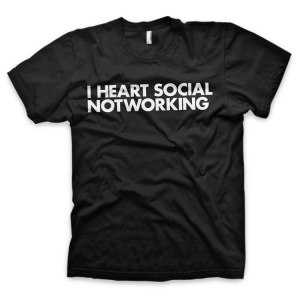In this digital age, it is best that we tap into the fact that everything can be done online. So why not set up an online business? It is proven that it is lucrative. Just look at the young and successful blogshop owners here in Singapore! Have you ever wondered how blogshops thrived? Or just any other online businesses?
If you are interested or considering to set up an online business,
take a look at the 10 key factors why some e-commerce succeeded:
1. Think strategy first. Website and everything else second.
Getting started with e-commerce can be difficult enough, but without a strategy to get your foot in the door – basically to promote your products it is definitely going to be a hard process. Ask yourself how people will find your products online and in search engines. So focus not only on your website but how it will be found in search engines too! Such a skull breaker this one..
2. Present the customer with a professional and reputable image.
There are millions of websites on the internet. Thus, it is hard enough to find a reliable one. Ultimately, for e-commerce sites, reputability is the deal breaker.
Consumers have such a wide variety of options available to them these days that you could lose them simply because your competition looks more reputable and professional than you. Despite how many people make purchases online, customers are still leery about using their credit card online. Having a site that looks great will go a long way in making that all important first impression and instilling confidence. Take the time to have your website designed by a professional and it will return your investment many times over.
3. Clearly tell customers why you are the site to buy from.
This may seem obvious but it’s surprising how many sites miss this effective and easy to implement idea. Make it clear why people should purchase from you. Simply tell them that you’re the obvious choice.
Why should they purchase anything from your website? Do you offer the low prices in your industry? Can you ship their purchases quicker? Do you have testimonials or product reviews? This can be integrated into everything from your site tagline to promotions on the homepage and throughout the website.
4. Make it EASY for customers to find what they are looking for.
Always offer flexible options for searching and sorting and navigation like some of the following: “Did you mean?” spelling corrections when searching.
- Search suggestions while typing.
- Related searches list.
- Advanced search options.
- Allow filtering – Filtering by price. Filter by availability. Filter by free shipping.
- Search tips and advice.
- Shop by brand.
- Shop by price.
- Saved searches and views.
You’ve got customers so don’t lose them because they can’t find what they want.
5. Keep it simple.
I am sure everyone including me wants a quick and easy way to shop. Time is valuable! So keep your site simple. I
Make the purchase process PAINLESS. Here are some basic recommendations:
- Provide an easy and clear way to add multiple items to a shopping cart.
- Provide a one-page checkout system.
- Give them shipping quote estimates.
- Do not require customers to register and provide a guest checkout option.
- Display clear pricing and shipping information.
- Make it quick and easy to pay and finalize the order.
6. Make your products easy to scan and read.
Basically, keep your headlines, summaries and other SHORT. People have short attention span.
7. For God’s sake, show them the products!
Focus on photos, keep text to a minimum unless it’s secondary.
- Allow the customer to see the product from different angles.
- Allow the customer to use photo zooming.
8. Offer many payment options.
Try to offer as many options as possible – Visa/Mastercard, Paypal(for the most obvious reasons), etc. If you have an e-commerce site you can also consider selling world-wide. Allow payments in multiple currencies!
9. Make your customers feel comfortable and secure.
Make your customers feel comfortable by prominently stating the following throughout your site and during the checkout process: Online security information, privacy policies, your guarantees, additional charges, return policies, shipping policies, order status updates, contact information, how you handle store credits, provide comments and reviews from past customers, integrate live chat so you can answer questions immediately. Give your customers access to customer service and differentiate yourself from the competition in every way possible. Give them your phone number!Past studies suggest that consumers feel more confident knowing you’re just a phone call away if they have a question or if there’s a problem with their order. Make them feel comfortable and they will buy.
10. Sell your customers more than what they came for.
Now that you have someone interested in buying, make sure to take it to the next level. This is a critical differentiator for sites that make a lot of sales and those who just survive. Sell your customers more “stuff”. Most of the time this is easier than you think.
Recommending options and/or additions to a purchase, customers will see what’s possible and available and increase their purchase.Integrated recommendations, up sells, internal promotions, popular products, customers who bought also bought, customers who viewed also viewed, list your new products, display your top/most popular products, list BOGO options, provide free shipping when they spend a certain amount of money (just a little more than the average cost of your products). Find ways to let them know about everything that you have and what might be a good addition to the purchase they came to make.
So now that you know the 10 key factors, what are you waiting for? You are ready to set up your online business! Just follow these 10 simple (yet thorough) steps and you can succeed too!
http://www.sanctuarymg.com/10-keys-to-an-effective-e-commerce-site/



